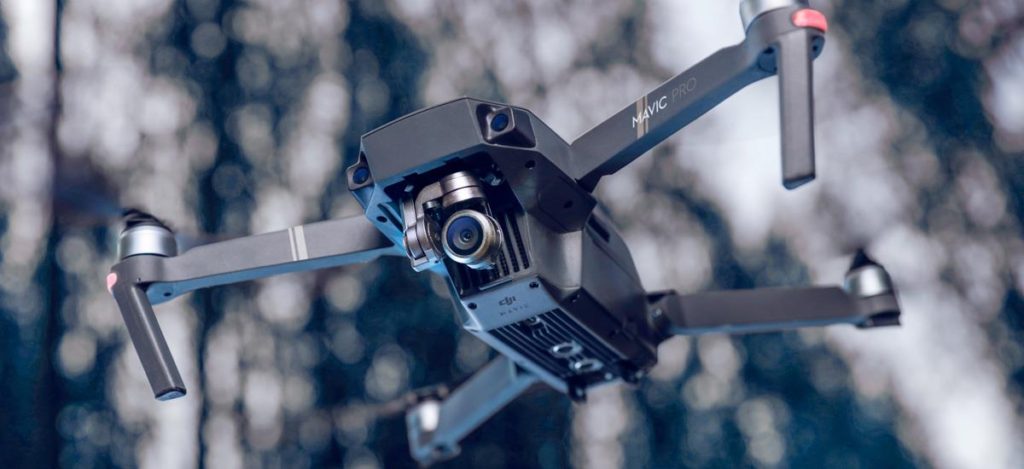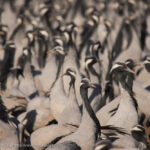DJI Mavic Pro
DJI has launched a small quadcopter which has lot of automated features.
According to DJI there are “24 high-performance computing cores” (whatever that means) and an all new transmission system which can have a range of upto 7kms (when there is no obstruction), 5 vision sensors and a 4K camera on a 3 axis gimbal.

DJI Mavic Pro
According to DJI, the DJI Mavic Pro has redundancy built-in with two sets of sensors. Generally these tiny drones can face interference issues and so the drone can behave erratically. So DJI has put in dual IMUs and dual compasses. So it is expected that the Mavic Pro will have good control over angle, speed, acceleration as well as ensure that the copter will return to the place designated as home with accuracy.
Stable propulsion system: Only when motors and propellers are intact and normal and the battery is sufficiently charged will the Mavic Pro fly.
Stability of flight altitude: Flight altitude is controlled by the Flight Controller. Any errors in attitude could have serious consequences including crashes.
Stability of sensors: Flight altitude is calculated from the data of an array of sensors. Any errors from the sensors could have serious consequences including crashes. According to DJI, normally the propulsion system and batteries are highly reliable whereas sensors, especially the IMU and the compass are prone to errors. So DJI decided to have two sets of sensors working simultaneously. Whenever the system detects an inconsistency in one, it switches to the other, keeping the quadcopter flysteady and in a reliable manner. In flight, the Mavic uses its compass to tell it where it is heading and the Inertial Measurement Unit (IMU) to tell it how it is flying. An interruption in the data flow from either of these may cause it to fly less reliably, so two sets of sensors are beneficial for keeping the flight steady and reliable.
The DJI Mavic Pro has the ability to hover at a particular place with precision. Generally the quadcopters depend upon the GPS satellite signals. When the signal gets blocked it becomes a problem. In indoor flying often the gps signal strength is less and in outdoor flying in situations like flying under a tree canopy cover or flying below a bridge with most of the other copters it becomes a challenge. The DJI Mavic Pro has dual forward vision sensors. This is supposed to help see obstacles in 3-dimensions upto 15 meters in front and enables precise hovering at upto 10meters without satellite positioning. The automatic landing and takeoff is claimed to be more accurate. The Mavic takes a burst of video of the ground during take off and landing and matches the satellite coordinates and helps land accurately. On paper this sounds very impressive.
The Mavic has an impressive range of 7Kms. It uses DJI’s OcuSync transmission system. DJI claims that the OcuSync performs far better than the WiFi signals and is able to transmit HD video signals reliably even when there is strong radio interference.
The Mavic has a camera which can shoot in DCI 4k (4096×2160) at 24fps, UHD (3840×2160) at 24/25/30p, 2.7k (2704×1520) at 24/25/30p, full HD (1920×1080) at upto 96p.
The video files are in MPEG 4 format and recorded at 60Mb/s.
The still photos are at 12 Megapixels in JPEG and RAW.
ISO range for video is from 100-3200 and for stills is from ISO 100 to ISO 1600.
The lens has got a focal length of 28mm (in terms of 35mm) at f2.2 aperture
For sports afficionado’s the Mavic can fly at upto 65 kmph in no wind conditions.
A major selling point of the Mavic is the small size. It is 83mm x83mmx198mm and weighs 743 gms. If you wear a trouser with big pockets, then this one can fit in.
B&H Link to DJI Mavic Pro: http://www.bhphotovideo.com/c/buy/DJI_Mavic_Pro/Ntt/DJI%2BMavic%2BPro/N/0/kw/search/BI/19990/KBID/13252/DFF/d10-v1-t12
- GoPro Hero 12 Black - 6 September,2023
- Leopards: The Last Stand - 2 July,2023
- Drifting in the Waters of Sundarbans - 26 March,2023










